-
 Bitcoin
Bitcoin $106,754.6083
1.33% -
 Ethereum
Ethereum $2,625.8249
3.80% -
 Tether USDt
Tether USDt $1.0001
-0.03% -
 XRP
XRP $2.1891
1.67% -
 BNB
BNB $654.5220
0.66% -
 Solana
Solana $156.9428
7.28% -
 USDC
USDC $0.9998
0.00% -
 Dogecoin
Dogecoin $0.1780
1.14% -
 TRON
TRON $0.2706
-0.16% -
 Cardano
Cardano $0.6470
2.77% -
 Hyperliquid
Hyperliquid $44.6467
10.24% -
 Sui
Sui $3.1128
3.86% -
 Bitcoin Cash
Bitcoin Cash $455.7646
3.00% -
 Chainlink
Chainlink $13.6858
4.08% -
 UNUS SED LEO
UNUS SED LEO $9.2682
0.21% -
 Avalanche
Avalanche $19.7433
3.79% -
 Stellar
Stellar $0.2616
1.64% -
 Toncoin
Toncoin $3.0222
2.19% -
 Shiba Inu
Shiba Inu $0.0...01220
1.49% -
 Hedera
Hedera $0.1580
2.75% -
 Litecoin
Litecoin $87.4964
2.29% -
 Polkadot
Polkadot $3.8958
3.05% -
 Ethena USDe
Ethena USDe $1.0000
-0.04% -
 Monero
Monero $317.2263
0.26% -
 Bitget Token
Bitget Token $4.5985
1.68% -
 Dai
Dai $0.9999
0.00% -
 Pepe
Pepe $0.0...01140
2.44% -
 Uniswap
Uniswap $7.6065
5.29% -
 Pi
Pi $0.6042
-2.00% -
 Aave
Aave $289.6343
6.02%
Is the rise with reduced volume and breaking through the previous high a real breakthrough?
A rise with reduced volume followed by a breakthrough of the previous high in crypto trading may be valid if supported by market trends and technical indicators.
Jun 14, 2025 at 11:57 am
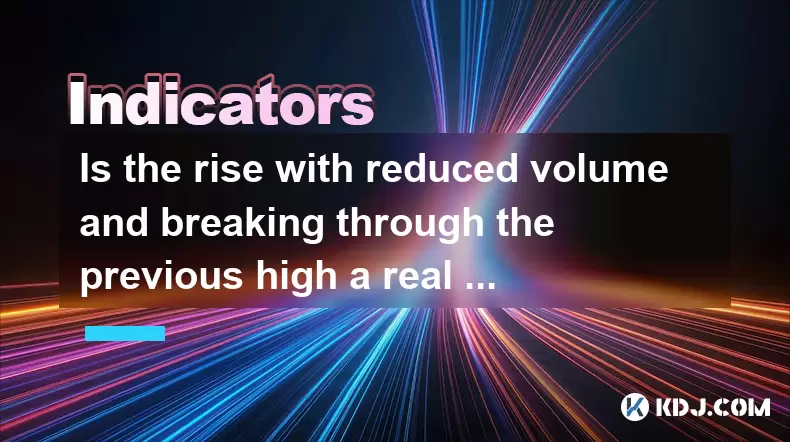
The question of whether a rise with reduced volume and a subsequent breakthrough of the previous high constitutes a real breakthrough is a critical one within the cryptocurrency trading community. Understanding the dynamics of volume and price movement is essential for traders to make informed decisions. In this article, we will explore the nuances of this scenario, examining the factors that contribute to its validity and the implications for traders.
The Role of Volume in Price Movements
Volume is a crucial indicator in the world of cryptocurrency trading. It represents the total number of coins or tokens traded within a given period. High volume often accompanies significant price movements, indicating strong interest and participation from traders. Conversely, low volume can suggest a lack of conviction or interest in the price movement. When a cryptocurrency experiences a rise with reduced volume, it raises questions about the sustainability of that rise.
Breaking Through the Previous High
A breakthrough of the previous high is generally considered a bullish signal. It suggests that the asset has overcome a significant resistance level, potentially paving the way for further gains. However, the validity of this breakthrough can be influenced by the accompanying volume. If the breakthrough occurs with reduced volume, it may not be as reliable as one with high volume.
Analyzing the Scenario: Rise with Reduced Volume and Breakthrough
When a cryptocurrency rises with reduced volume and subsequently breaks through the previous high, several factors need to be considered to determine if it is a real breakthrough. The first factor to consider is the context of the overall market trend. If the broader market is bullish, a breakthrough with reduced volume might still be valid, as it could be part of a larger upward movement. Conversely, in a bearish market, such a breakthrough might be less convincing.
Technical Indicators and Confirmation
To further assess the validity of a breakthrough with reduced volume, traders often turn to technical indicators. Indicators such as the Relative Strength Index (RSI), Moving Averages, and the MACD can provide additional insights. For instance, if the RSI is not overbought and the MACD shows a bullish crossover, these signals can support the validity of the breakthrough. Conversely, if these indicators suggest overbought conditions or bearish divergence, the breakthrough might be less reliable.
Case Studies and Historical Data
Examining historical data and case studies can offer valuable insights into the reliability of breakthroughs with reduced volume. Analyzing past instances where similar scenarios occurred can help traders understand the potential outcomes. For example, if historical data shows that such breakthroughs often lead to further gains, it might increase confidence in the current scenario. On the other hand, if past instances frequently resulted in reversals, it would be a cause for caution.
Market Sentiment and News
Market sentiment and news can also play a significant role in the validity of a breakthrough. Positive news or a bullish market sentiment can bolster a breakthrough with reduced volume. For instance, if a major cryptocurrency project announces a significant partnership or a regulatory development favors the market, it can drive interest and validate the breakthrough. Conversely, negative news or bearish sentiment can undermine the validity of the breakthrough, even if the price action initially suggests otherwise.
Trading Strategies Based on Breakthroughs with Reduced Volume
Traders can develop specific strategies to navigate breakthroughs with reduced volume. One approach is to wait for confirmation from volume or other technical indicators before entering a trade. For instance, if the breakthrough occurs with reduced volume, a trader might wait for a subsequent increase in volume to confirm the move. Another strategy is to use stop-loss orders to manage risk, ensuring that any potential reversal does not result in significant losses.
The Importance of Risk Management
Regardless of the validity of a breakthrough, risk management remains a critical aspect of trading. Traders should always consider their risk tolerance and position sizing when entering trades based on breakthroughs with reduced volume. Using stop-loss orders and diversifying across different assets can help mitigate potential losses if the breakthrough turns out to be false.
Frequently Asked Questions
Q: Can a breakthrough with reduced volume be a false signal?
A: Yes, a breakthrough with reduced volume can indeed be a false signal. Without strong volume to support the price movement, the breakthrough may lack the necessary momentum to sustain further gains. Traders should look for additional confirmation from technical indicators and market sentiment before acting on such a breakthrough.
Q: How can traders differentiate between a real and a false breakthrough with reduced volume?
A: To differentiate between a real and a false breakthrough with reduced volume, traders should consider multiple factors. Analyzing the broader market trend, using technical indicators for confirmation, and monitoring market sentiment and news can provide a more comprehensive view. Additionally, waiting for an increase in volume after the initial breakthrough can help validate the move.
Q: What are the risks of trading based on a breakthrough with reduced volume?
A: Trading based on a breakthrough with reduced volume carries several risks. The primary risk is that the breakthrough might be a false signal, leading to a reversal and potential losses. Additionally, without strong volume to support the price movement, the likelihood of sustained gains is reduced. Traders should use risk management techniques, such as stop-loss orders, to mitigate these risks.
Q: Are there any specific cryptocurrencies where breakthroughs with reduced volume are more common?
A: While breakthroughs with reduced volume can occur in any cryptocurrency, they might be more common in less liquid or smaller market cap cryptocurrencies. These assets often have lower trading volumes, making it easier for price movements to occur with reduced volume. However, the validity of such breakthroughs still depends on the factors discussed earlier, such as market trend, technical indicators, and market sentiment.
Disclaimer:info@kdj.com
The information provided is not trading advice. kdj.com does not assume any responsibility for any investments made based on the information provided in this article. Cryptocurrencies are highly volatile and it is highly recommended that you invest with caution after thorough research!
If you believe that the content used on this website infringes your copyright, please contact us immediately (info@kdj.com) and we will delete it promptly.
- 2025-W Uncirculated American Gold Eagle and Dr. Vera Rubin Quarter Mark New Products
- 2025-06-13 06:25:13
- Ruvi AI (RVU) Leverages Blockchain and Artificial Intelligence to Disrupt Marketing, Entertainment, and Finance
- 2025-06-13 07:05:12
- H100 Group AB Raises 101 Million SEK (Approximately $10.6 Million) to Bolster Bitcoin Reserves
- 2025-06-13 06:25:13
- Galaxy Digital CEO Mike Novogratz Says Bitcoin Will Replace Gold and Go to $1,000,000
- 2025-06-13 06:45:13
- Trust Wallet Token (TWT) Price Drops 5.7% as RWA Integration Plans Ignite Excitement
- 2025-06-13 06:45:13
- Ethereum (ETH) Is in the Second Phase of a Three-Stage Market Cycle
- 2025-06-13 07:25:13
Related knowledge
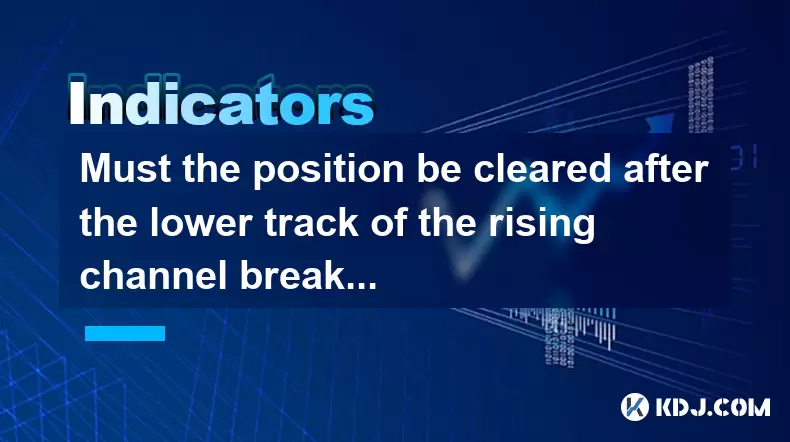
Must the position be cleared after the lower track of the rising channel breaks?
Jun 16,2025 at 04:43pm
Understanding the Rising Channel BreakdownIn technical analysis, a rising channel is formed by drawing two parallel trendlines: one connecting higher lows and another connecting higher highs. When the price breaks below the lower trendline of this channel, it signals a potential reversal or at least a pause in the uptrend. This event often triggers trad...
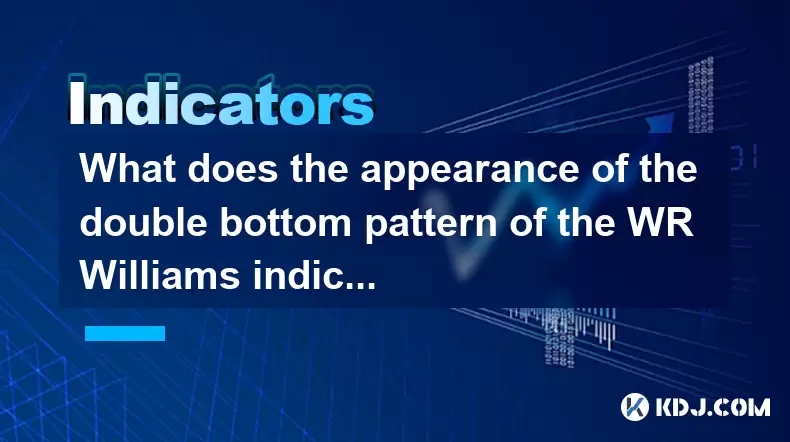
What does the appearance of the double bottom pattern of the WR Williams indicator mean? Can I buy the bottom?
Jun 16,2025 at 01:01pm
Understanding the WR Williams IndicatorThe WR (Williams %R) is a momentum oscillator used in technical analysis to identify overbought and oversold levels in trading. Developed by Larry Williams, this indicator oscillates between 0 and -100. A reading above -20 typically indicates overbought conditions, while a reading below -80 signals oversold territo...
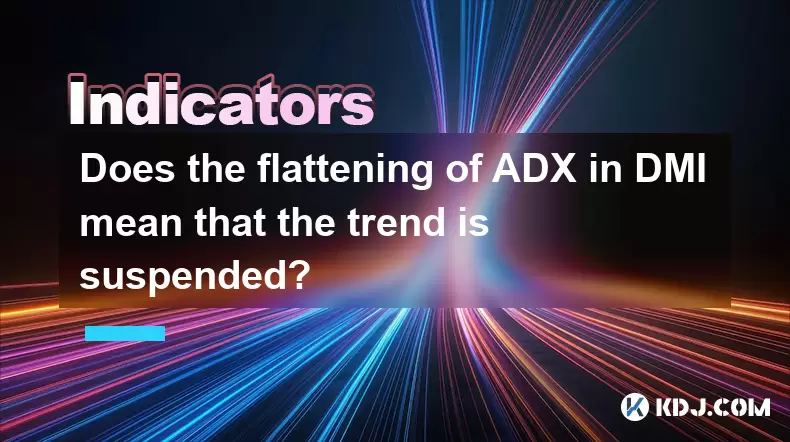
Does the flattening of ADX in DMI mean that the trend is suspended?
Jun 16,2025 at 02:07pm
Understanding the ADX and DMI IndicatorsThe ADX (Average Directional Index) is part of the DMI (Directional Movement Index) system developed by J. Welles Wilder to measure trend strength. The DMI itself consists of three components: the +DI (Positive Directional Indicator), -DI (Negative Directional Indicator), and the ADX line. While the +DI and -DI he...
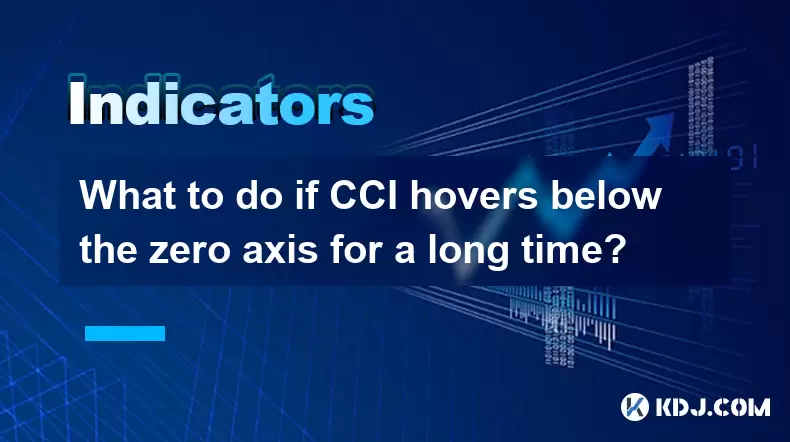
What to do if CCI hovers below the zero axis for a long time?
Jun 16,2025 at 04:05pm
Understanding the CCI Indicator in Cryptocurrency TradingThe Commodity Channel Index (CCI) is a versatile technical indicator used extensively in cryptocurrency trading to identify overbought or oversold conditions, as well as potential trend reversals. When the CCI hovers below the zero axis for an extended period, it can signal a prolonged bearish sen...
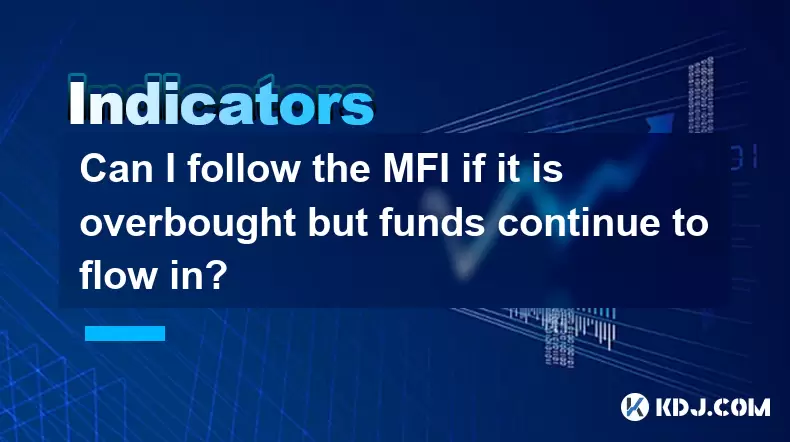
Can I follow the MFI if it is overbought but funds continue to flow in?
Jun 16,2025 at 03:07pm
Understanding the MFI Indicator in Cryptocurrency TradingThe Money Flow Index (MFI) is a technical indicator used extensively in cryptocurrency trading to measure buying and selling pressure. It combines price and volume data to assess overbought or oversold conditions. Typically, an MFI reading above 80 indicates overbought territory, while below 20 su...
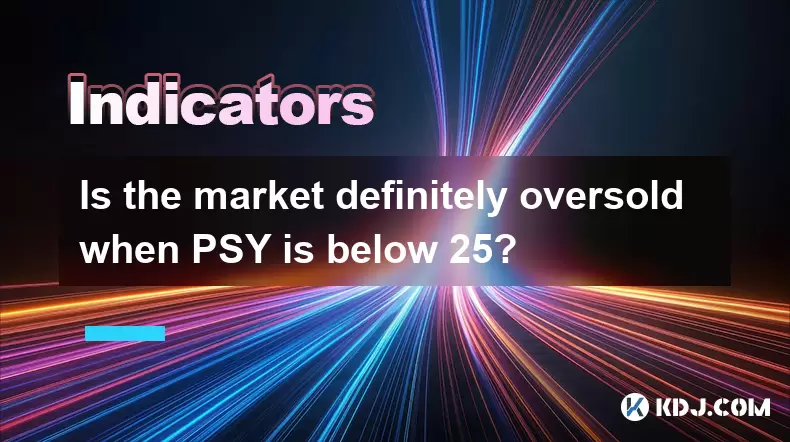
Is the market definitely oversold when PSY is below 25?
Jun 16,2025 at 03:43pm
Understanding the Psychological Line (PSY) IndicatorThe Psychological Line (PSY) is a momentum oscillator used in technical analysis to gauge investor sentiment. It measures the ratio of days when the price closes higher versus the number of days it closes lower over a specific period, typically 12 or 25 trading days. The resulting value ranges from 0 t...

Must the position be cleared after the lower track of the rising channel breaks?
Jun 16,2025 at 04:43pm
Understanding the Rising Channel BreakdownIn technical analysis, a rising channel is formed by drawing two parallel trendlines: one connecting higher lows and another connecting higher highs. When the price breaks below the lower trendline of this channel, it signals a potential reversal or at least a pause in the uptrend. This event often triggers trad...

What does the appearance of the double bottom pattern of the WR Williams indicator mean? Can I buy the bottom?
Jun 16,2025 at 01:01pm
Understanding the WR Williams IndicatorThe WR (Williams %R) is a momentum oscillator used in technical analysis to identify overbought and oversold levels in trading. Developed by Larry Williams, this indicator oscillates between 0 and -100. A reading above -20 typically indicates overbought conditions, while a reading below -80 signals oversold territo...

Does the flattening of ADX in DMI mean that the trend is suspended?
Jun 16,2025 at 02:07pm
Understanding the ADX and DMI IndicatorsThe ADX (Average Directional Index) is part of the DMI (Directional Movement Index) system developed by J. Welles Wilder to measure trend strength. The DMI itself consists of three components: the +DI (Positive Directional Indicator), -DI (Negative Directional Indicator), and the ADX line. While the +DI and -DI he...

What to do if CCI hovers below the zero axis for a long time?
Jun 16,2025 at 04:05pm
Understanding the CCI Indicator in Cryptocurrency TradingThe Commodity Channel Index (CCI) is a versatile technical indicator used extensively in cryptocurrency trading to identify overbought or oversold conditions, as well as potential trend reversals. When the CCI hovers below the zero axis for an extended period, it can signal a prolonged bearish sen...

Can I follow the MFI if it is overbought but funds continue to flow in?
Jun 16,2025 at 03:07pm
Understanding the MFI Indicator in Cryptocurrency TradingThe Money Flow Index (MFI) is a technical indicator used extensively in cryptocurrency trading to measure buying and selling pressure. It combines price and volume data to assess overbought or oversold conditions. Typically, an MFI reading above 80 indicates overbought territory, while below 20 su...

Is the market definitely oversold when PSY is below 25?
Jun 16,2025 at 03:43pm
Understanding the Psychological Line (PSY) IndicatorThe Psychological Line (PSY) is a momentum oscillator used in technical analysis to gauge investor sentiment. It measures the ratio of days when the price closes higher versus the number of days it closes lower over a specific period, typically 12 or 25 trading days. The resulting value ranges from 0 t...
See all articles

























































































